Irén Lovász has worked on her four-part record series Healing Voices for seventeen years. After Sacred Voice, Inner Voice and Female Voice, the final piece, Healing Voice, arrived this year, completing the collection. I talked to the Kossuth Prize-winning singer about the album release concert on 8 October, but of course, wherever our conversation led, we still kept coming back to the same question: how can voice be “healing”?
Why did it take so long between the beginning and the end of the series?
Because good work takes time. I had the idea for the series sometime around 2003-2004. I had a dream of a mandala, a circle divided into four parts, which was included inside the cover of each album. I had already been involved in music for many years: as an ethnographer and anthropologist, I had experienced the importance of the human voice and singing in traditional peasant culture, and as a singer, I had observed the effect that songs have on people. I interpreted the symbol in my dream as a sign that I have some work to do with this, I have to pass on to others what I know about and from music. And the four parts of the circle suggested that I should make four records.
The first, Sacred Voice, came out in 2006 and went straight to gold, as did the second, Inner Voice. Sacred Voice, as the name suggests, is a singing of the transcendental, for which I have selected songs appropriate to the festivals of the year. Through them, I also show how this cyclicality helps the personality to evolve over time, how it contributes, not only in tradition but also today, to the development and functioning of a harmonious personality. The second disc is the 2007 Inner Voice, which is organised around the four primordial elements. It explores how their energies are present in Hungarian folk songs, and how we can use them to bring out the earthy, watery, fiery and airy elements of our own personality. The other part of that album is improvisation, vocal singing without lyrics. Inner Voice is the one which is mostly used for therapeutic purposes, for example with anorexic adolescent girls at the Budapest Children’s Clinic. And Robert Logan, a British composer, claims that Inner Voice cured his tinnitus when he was unable to listen to any other music.
In 2017 came the third album, Female Voice, which contains songs about femininity and women’s fates in folk tradition, and points out that women have always found it easier to get through troubles and difficulties if they sang them out. It is a huge help in itself if we become aware of this. Singing is present in the tradition from birth to death, so the album includes, for example, prayers for easy childbirth, wedding songs, and much more. My mother’s voice is also heard here; I inherited my urge to sing from her. And this year’s album, Healing Voice, is a summary of all of the above, adding the aspect that living with nature is inherently healing. The human being features as a part of nature on this album, because those who can live in harmony with nature are inherently healthier and happier. A significant part of the album is made up of healing blessings and well-wishes, which evokes the back-and-forth word magic associated with them. Take the birthday greetings, for example: a Hungarian might want to know these beautiful, authentic Hungarian greetings in addition to the usual ’happy birthday’ tune.
Where do these musical treasures come from?
I have been collecting music since I was a 20-year-old university student. Healing Voice contains pieces of my latest fieldwork in the region Gyimes in Transylvania. I found pure medieval charm prayers and healing texts that are still used by women – for snakebites, stye, the evil eye… Obviously, my aim is not to make people of Budapest want to cure their illnesses and injuries with these, but to show how the intention and ability to heal with words, songs and prayers is so integral to the Hungarian tradition.
As I am not only a singer, but also an ethnographer and anthropologist, I look at art and religion from an anthropological perspective. I am most interested in the roots of both: what is their most primary function, where are they most deeply connected? I think I discover all this in healing, in sacred communication. The primary function of music, despite all appearances, is not entertainment. Obviously it is also important, but if we dig deeper than that, more and more sources point towards a magical, enchanting function. Our ancestors sang and made music to attract goodness, health, abundance, and to keep away all badness, sickness, pain. There are, for example, New Year’s greetings that combine these two. I quote from the record:
May God give us all the best,
May He forestall all that’s bad,
Save us from what we fear,
Give us what we are hoping for, in this new year!
The same principle works in the most archaic energy healing processes, the prana, or the reiki, and everything like that: to dissolve the affliction, the disease, to get rid of it. Here is a quote from the Gyimes charm prayers on the album:
Go back, spells, to whence you came!
Leave, disperse!
Like foam on the sea,
leave, disperse!
In all religions, in all cultures, this very ancient healing ability is indeed present. As a bonus, I have included the Voice Ladder on the album, which I use in my music therapy based singing circle: a ritual boundary-marking, welcoming vocal exercise which which every session begins and ends. I’ve seen many wonderful stories unfold in front of my eyes, such as the story of a lady who was afraid to sing for decades because of childhood teasing, and then the voice ladder helped her to release the cramps and traumatic memories of the abuse, and now she is using her voice again with courage and freedom. We also did the voice ladder with the aforementioned Robert Logan, whose tinnitus was helped by Inner Voice, when he visited Hungary. We have been on good terms ever since, and he edited the English translation of the album’s foreword.
The album also features Дeva, a 23-year-old singer who combines Hungarian folk music with electronic music. How did the collaboration with her start?
Last year I was asked to do a Mother’s Day performance based on Female Voice. But my mother had just died and I knew that no one could replace her in a Mother’s Day show. However, I also sing a lot of bridesmaids’ farewells, where mother says goodbye to daughter or daughter to mother, and I thought maybe I needed someone to portray this concept of motherhood. I titled the concert Apple’s Tree, and the organisers brought Дeva to my attention. She said in an interview that I was one of her main inspirations, that she adores Inner Voice – which she calls the best Hungarian world music album – was very important to her, and when asked who she would like to play with, she said Irén Lovász.
The organisers encouraged me to check her out, and I admired how strange her artistic world was. Very individual, very brave, and yes, I used to be like that myself. If I were 20 years old, I might be doing something like her now. Moreover, she is my children’s generation, and I teach the same twenty-somethings at university, and I saw immediately what unique and important representative Дeva is of her age group, what a special way he approaches everything. She sang the girl roles, I sang the mother roles, and this concept of the Apple’s Tree turned out to be very beautiful. Some of those live concert recordings were included on the album, and we also made new studio recordings. We practically worked through my Gyimes collections together under the title Charmers.
I told Дeva: we shall articulate the charm prayers, magic spells, enchanted texts, as if the hundred thousand female ancestors were all present. We evoke them as if all those black-headscarved old women were standing there, further and further down in time, smaller and smaller, but we make them present, and we bring them there, and we represent their voices, their knowledge. On the recordings and at the concert, the Gyimes grannies themselves are heard, and through them, through the archival recordings, all the hundred thousand ancestors, And Дeva, with her twenty-three years, represents the future and its potential.
Who else is playing on the album and at the concert?
My old partner in crime is Zoltán Mizsei, with whom I have performed on several of my albums, and together with Kornél Horváth we form a singer-keyboard-percussion trio: we are going to play two introductory songs from the album Soundscape of the Irén Lovász – Groove Voice Trio.
The improvisation by saxophonist Béla Ágoston was a one-off miracle at last year’s concert, and I’m sure he himself could never have played it the same way again, so I’m very happy that we recorded it and it made it onto the album. László Keönch plays the calimba, and Ágnes Pintér, who played the water harp on the Inner Voice album, returns with her instrument here.
Alongside them, I asked two more wonderful musicians, Miklós Lukács on cimbalom and Zoltán Lantos on violin, to contribute. They are great collaborators, because they are both free musicians, active in many different genres – but they understand that the task here is not to show off their virtuosity, even if they could do it at any time, but to subordinate their talents to a meditative, helping and healing purpose. I specifically asked Miklós Lukács, for example, to play and accompany as softly as if we were walking on clouds. They both play with great self-discipline and humility, and deserve all the respect they can get. It is a blessing to have such wonderful musicians accept my invitation. It is going to be a special and beautiful concert.






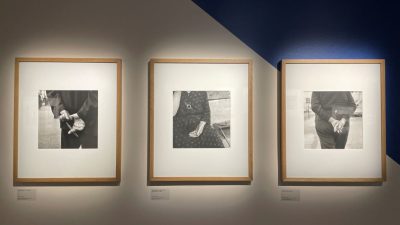










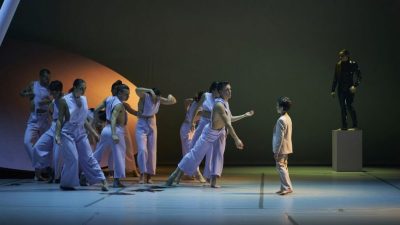





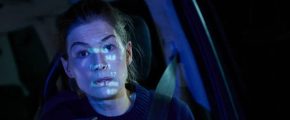

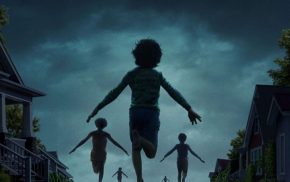
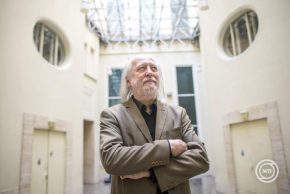
Comments